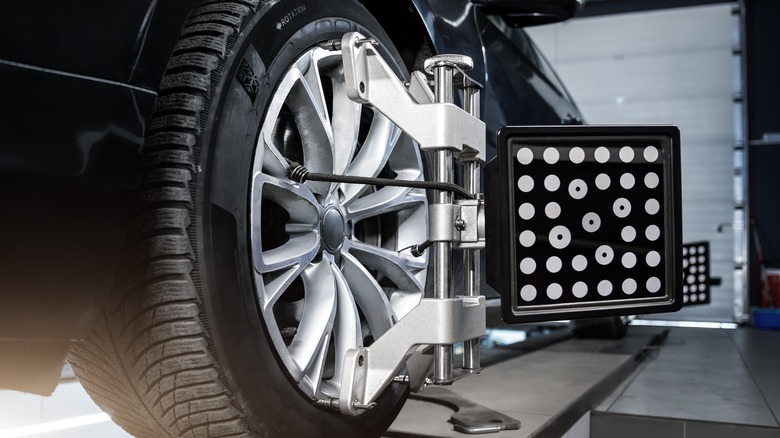5 Crucial Signs That Your Wheels Need An Alignment
Getting a wheel alignment for your car is essential to routine maintenance. Despite its name, a wheel alignment has nothing to do with adjusting the wheels and tires of your car. Instead, the alignment process involves checking and adjusting the camber, caster, toe, and thrust angles of the steering and the car's suspension. Driving with the wheels in proper alignment brings many benefits, including even tire wear, better stability, niftier handling, and a more accurate steering feel.
However, regularly driving through potholes, unevenly paved roads, rough terrain, or hitting curbs could affect the wheel alignment of your ride, which could also introduce a host of worrying symptoms. Furthermore, a wonky alignment could mean wear and tear on various suspension and steering components, like bad ball joints, leaky dampers, worn tie rods, or a damaged steering rack.
Luckily, checking if your car needs an alignment is relatively easy, and there are five crucial signs to watch out for.
The top 5 signs your car needs an alignment
The most apparent symptom of a bad wheel alignment is if the vehicle veers to one side, aptly called "pulling" in automotive terminology. Ideally, your car's steering should remain centered on a straight road. If you take your hands off the wheel and the vehicle gently turns left or right, it's a sign that your car needs an alignment ASAP.
Ignoring the pulling symptoms will also introduce uneven wear on the tires. Even if the steering wheel is front and center and has no signs of pulling, a lousy alignment could introduce rapid or uneven tire wear. Make it a habit to visually inspect your car's tires at least once a week or before embarking on a long drive. Catching the early signs of premature tire wear will save you money in the long run.
Meanwhile, it's time to schedule a wheel alignment if the steering wheel is not in the center position when driving in a straight line. Excessive vibrations from the wheels or steering wheel are also another symptom that your alignment requires attention, whether it's faint or strong shaking. Lastly, check the wheel alignment if the steering wheel feels overly loose or somewhat inaccurate in its responsiveness.
Experts recommend getting a wheel alignment at every other oil change, preferably once every 6,000 miles. Periodic wheel alignments will keep your vehicle running like new, maximize driving comfort, help conserve fuel, and extend the life of your tires.

